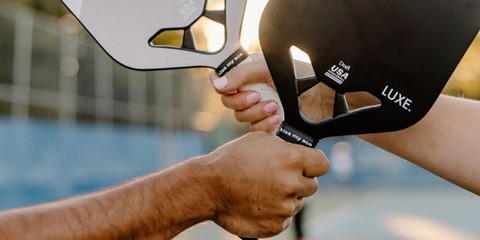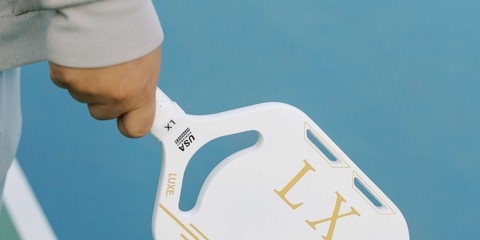20 Essential Pickleball Terms Every Player Should Know
The Ultimate Glossary of Pickleball Terms for Beginners and Enthusiasts
Pickleball is one of the fastest-growing sports in the world, combining elements of tennis, badminton, and ping-pong. Whether you’re a beginner or a seasoned player, understanding the lingo is essential for improving your game and fully enjoying the sport. Below, we’ve compiled a comprehensive glossary of 20 must-know pickleball terms. Let’s dive in!
1. Kitchen
The “kitchen” refers to the non-volley zone on the court, a 7-foot area on both sides of the net. Players cannot step into the kitchen to hit a volley. Mastering kitchen rules is key to avoiding faults.
2. Dink
A dink is a soft shot played close to the net, designed to drop into your opponent’s non-volley zone. This strategic shot is critical in slowing down aggressive rallies.
3. Volley
A volley occurs when a player hits the ball before it bounces on the court. It’s a fast-paced move that requires precise timing and positioning.
4. Fault
A fault is any rule violation that ends a rally. Common faults include hitting the ball out of bounds, stepping into the kitchen during a volley, or failing to serve properly.
5. Serve
The serve is how every rally begins. In pickleball, the serve must be made underhand and diagonally cross-court. Understanding serve rules is crucial to starting strong.
6. Ace
An ace is a serve that the opponent fails to return, scoring a direct point. A powerful and accurate serve can lead to more aces in your game.
7. Third Shot Drop
This is a soft shot used on the third shot of a rally, aimed at landing in the opponent’s kitchen. It’s a strategic way to neutralize aggressive play and regain control.
8. Side Out
A side out occurs when the serving team loses the rally, and the serve goes to the opposing team. Proper strategy can help minimize side outs and maintain service.
9. Paddle
The paddle is the equipment used to hit the ball. Pickleball paddles come in various materials, including wood, composite, and graphite, each offering unique advantages.
10. Let
A let happens when the serve hits the net but still lands in the correct service area. When this occurs, the server gets another chance without penalty.
11. Double Bounce Rule
After the serve, the ball must bounce once on each side of the net before volleys are allowed. This rule encourages fair play and minimizes quick rallies.
12. Baseline
The baseline is the back boundary line of the court. Keeping your shots within the baseline is essential to avoid faults.
13. Cross-Court
Cross-court refers to a shot that travels diagonally across the net. Cross-court dinks and drives are common strategies to keep opponents on their toes.
14. Erne
An advanced shot where a player leaps outside the court near the kitchen to hit the ball, often catching the opponent off guard. It’s a highlight-worthy move when executed well.
15. Lob
A lob is a high, arcing shot meant to go over an opponent’s head, forcing them to retreat. It’s a great way to regain control during fast rallies.
16. Drive
A drive is a powerful and fast shot aimed at the opponent’s feet or backcourt. It’s often used to apply pressure during rallies.
17. Poach
A poach occurs when one doubles partner crosses into the other’s side of the court to intercept and hit the ball. Effective poaching requires excellent communication and timing.
18. Rally
A rally is the sequence of hits that happens after the serve and before a fault. Longer rallies test players’ stamina, strategy, and skills.
19. Overhead Smash
An overhead smash is a hard, downward shot made when the ball is high in the air. It’s a decisive way to end a rally and score a point.
20. Spin
Spin refers to the rotation applied to the ball during a shot, affecting its bounce and trajectory. Adding spin to your serves and returns can give you a competitive edge.
Why Learning Pickleball Terms Matters
Understanding these pickleball terms isn’t just about improving your vocabulary—it’s about enhancing your gameplay and enjoying the sport to its fullest. Knowing these definitions will help you communicate effectively on the court, refine your strategy, and avoid common mistakes.
Whether you’re just starting your pickleball journey or looking to take your game to the next level, this glossary is your ultimate guide to mastering the sport. Now, grab your paddle, head to the court, and start practicing these terms in action!

